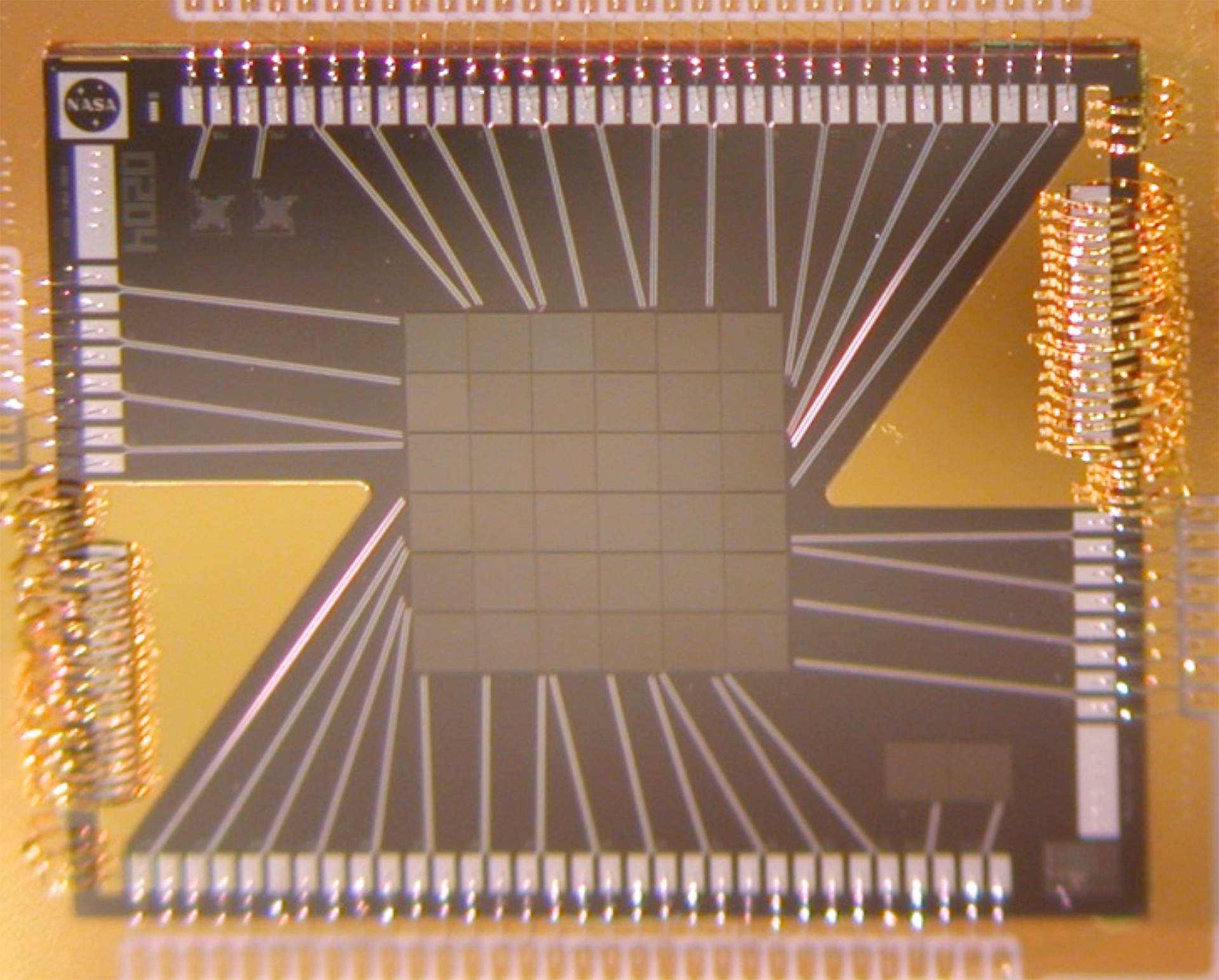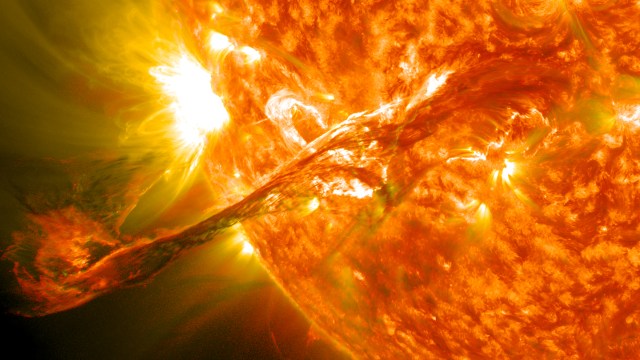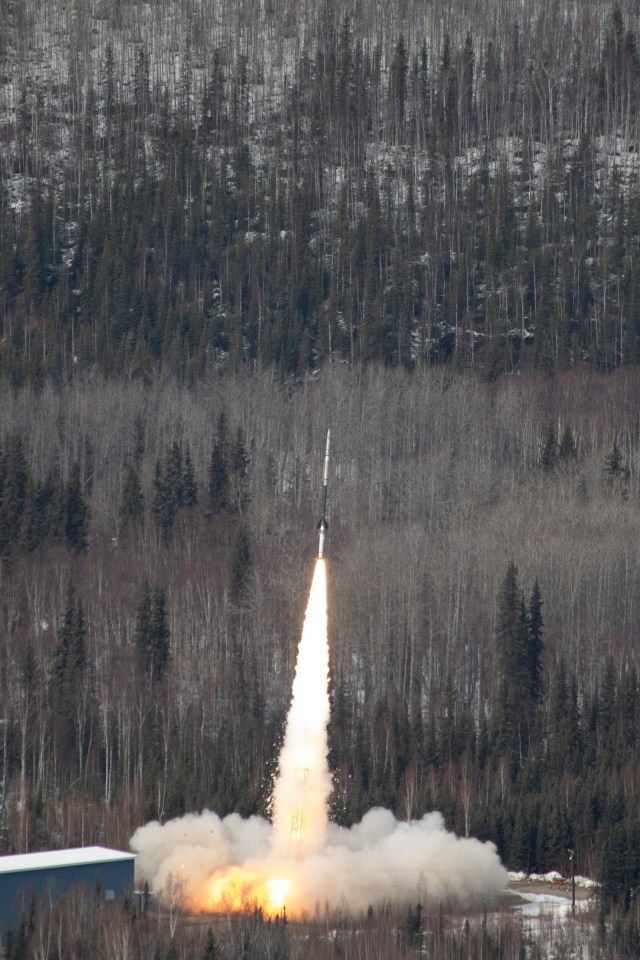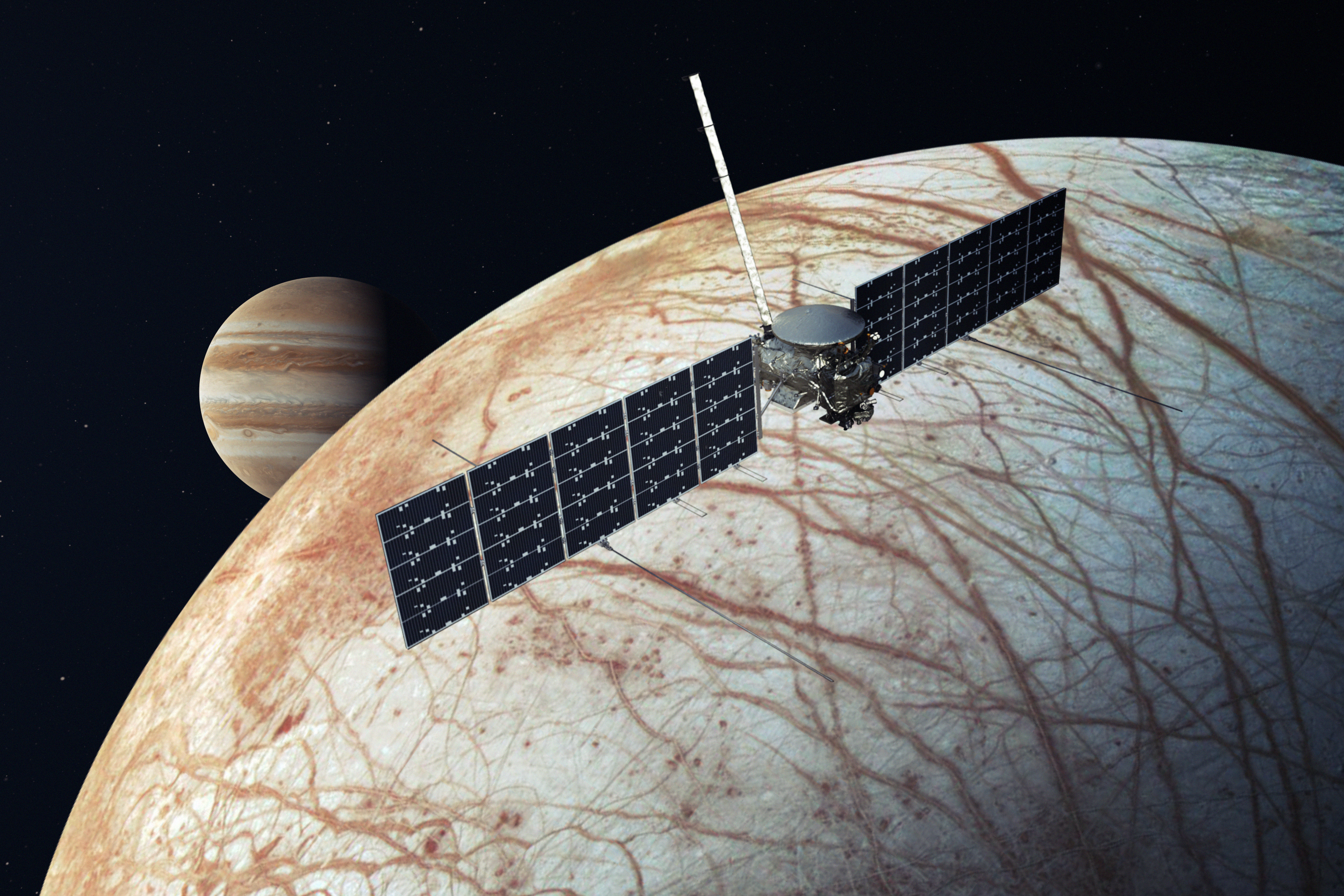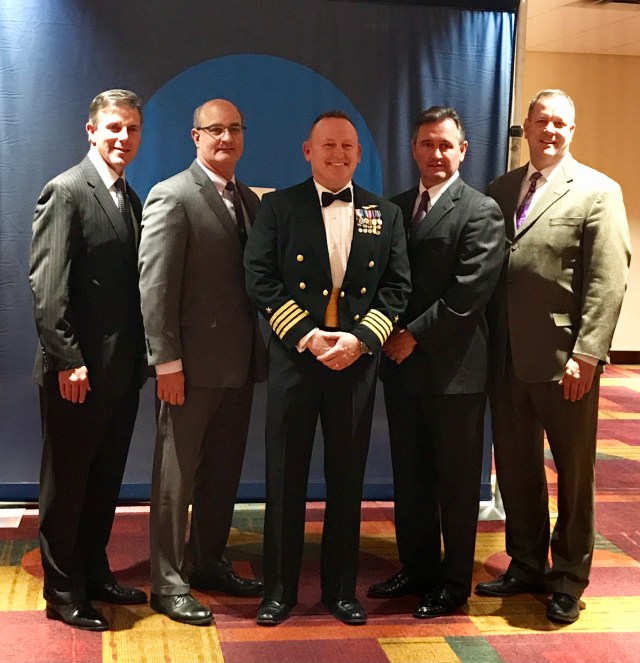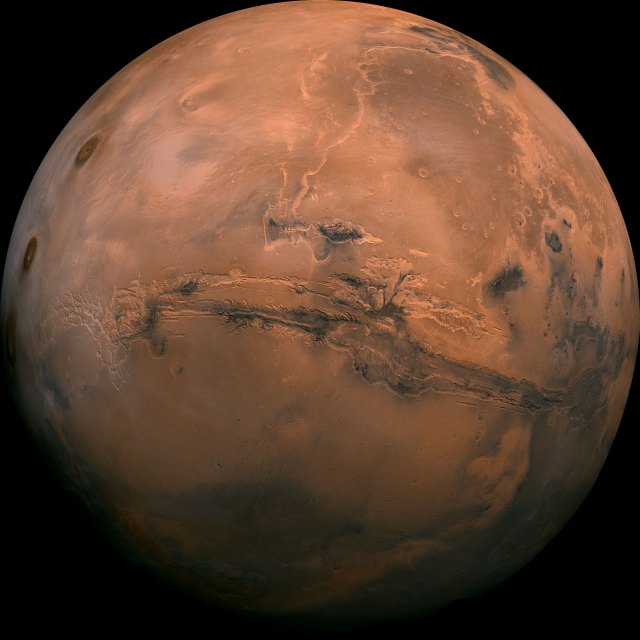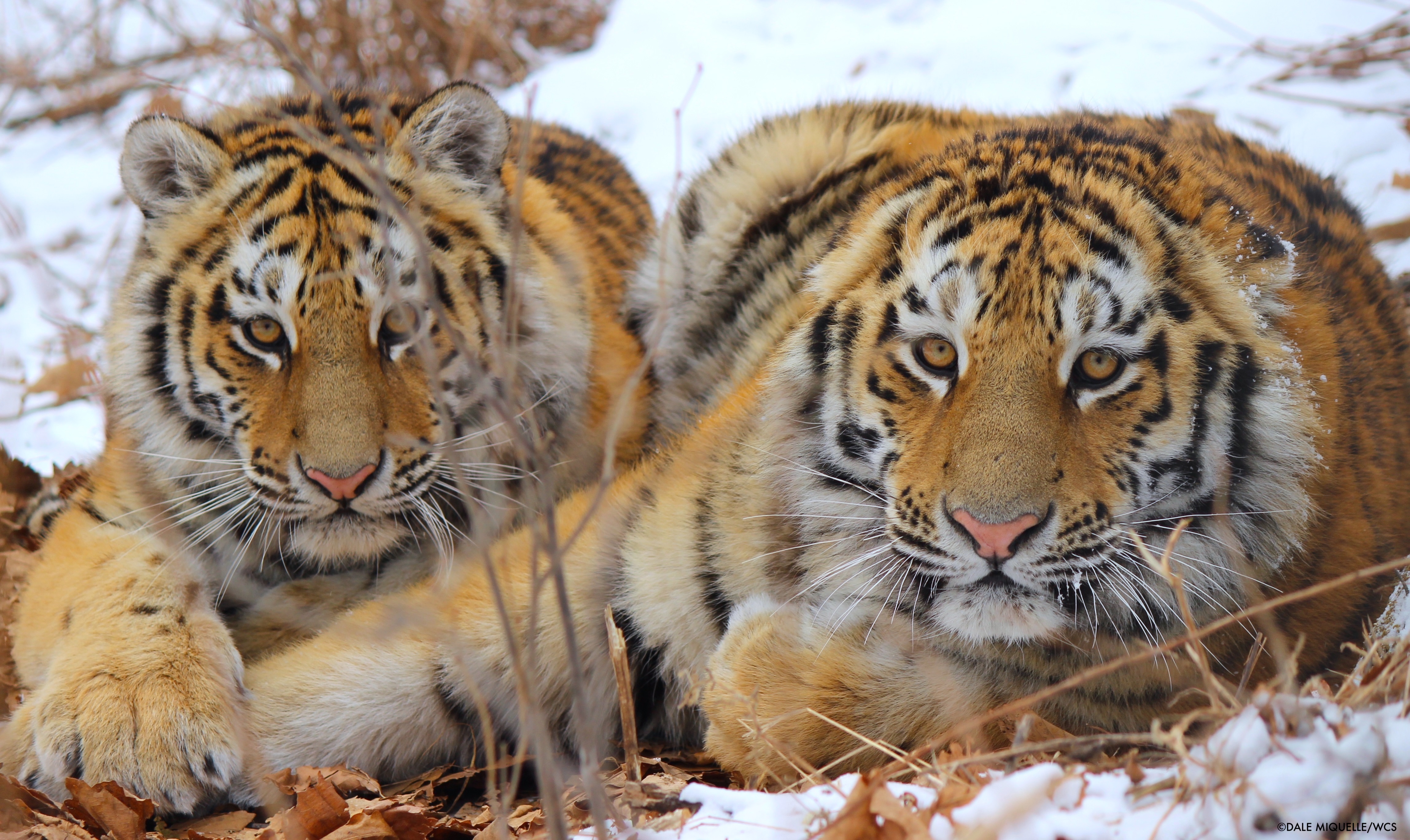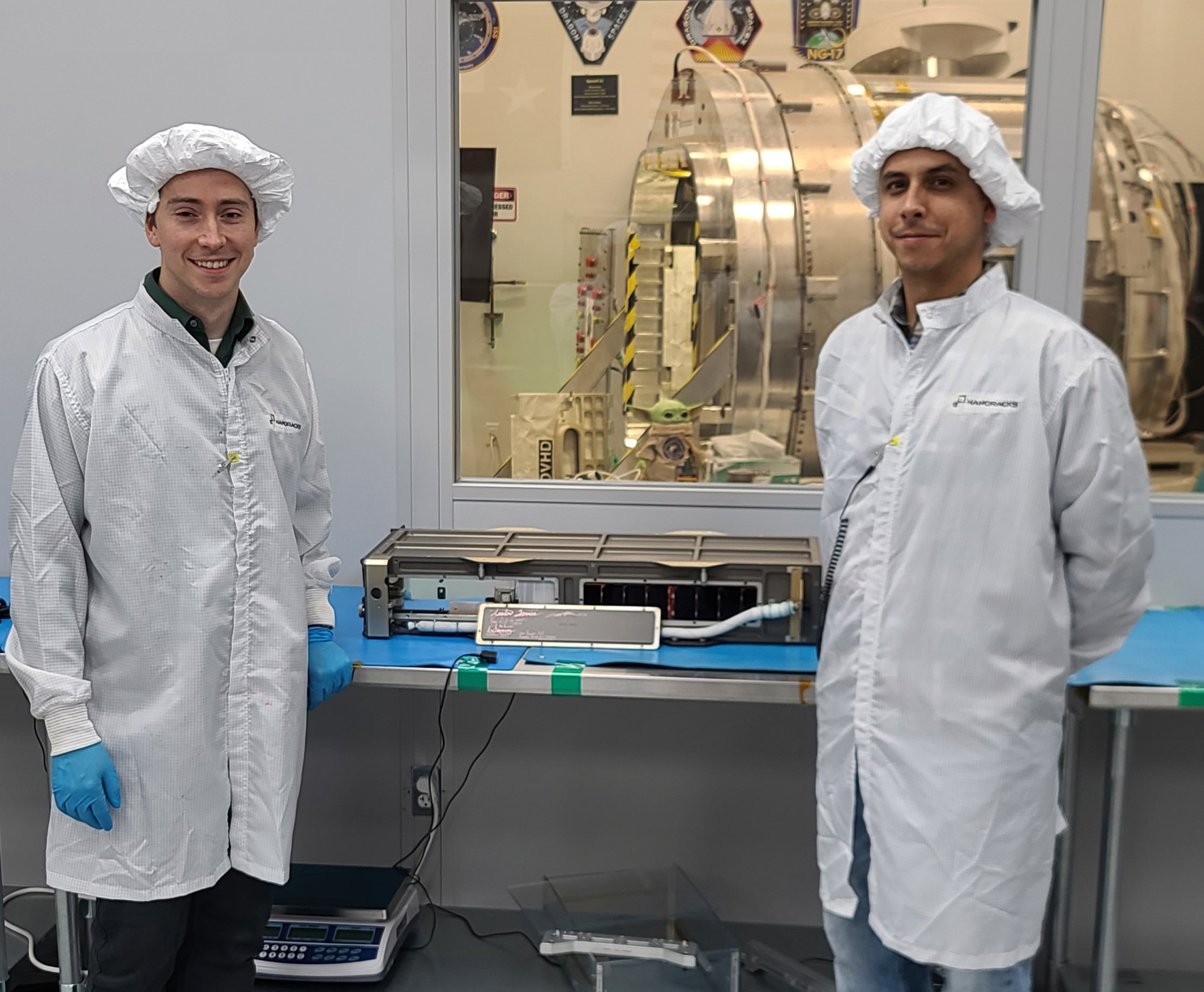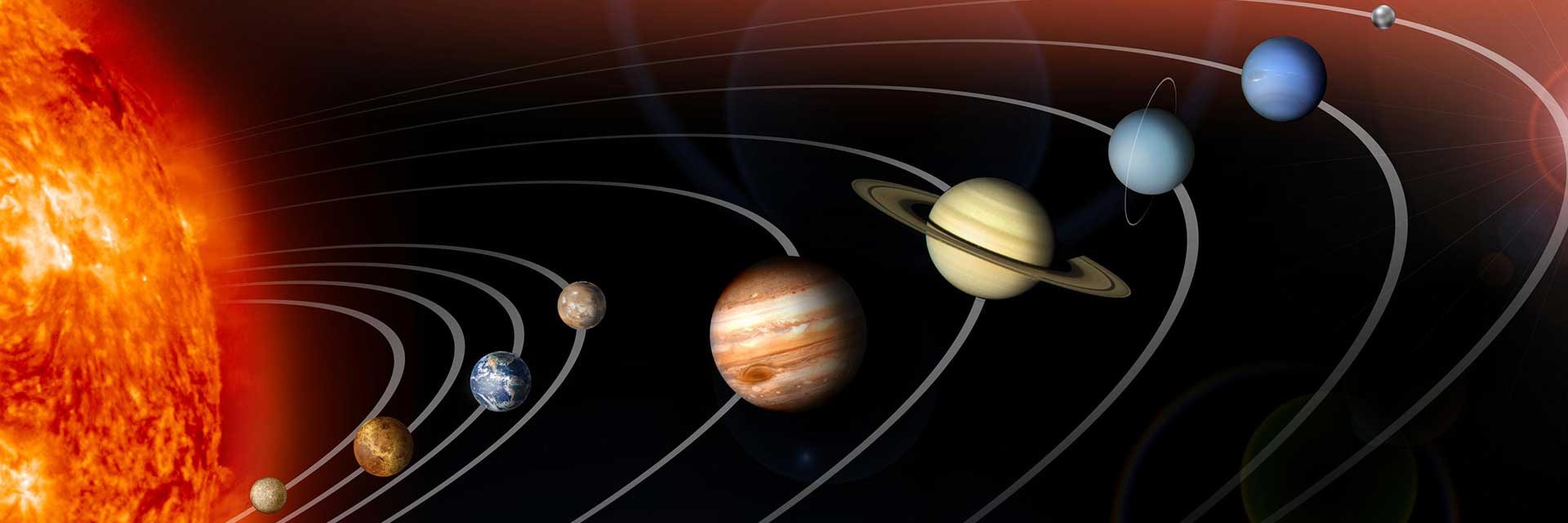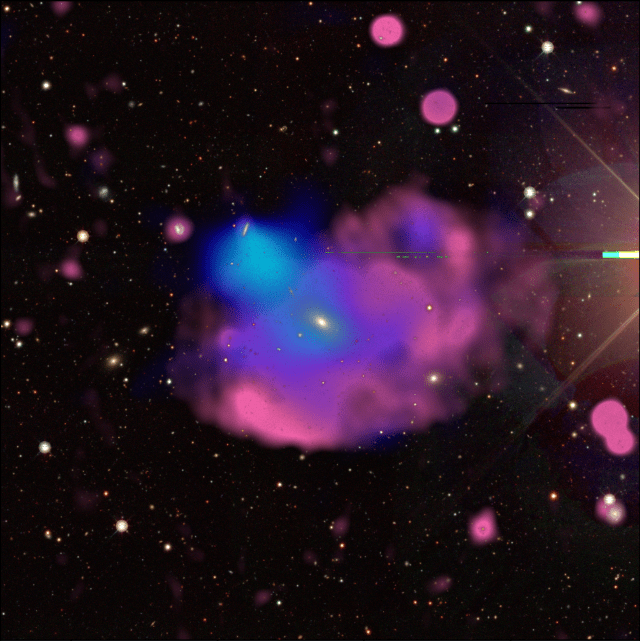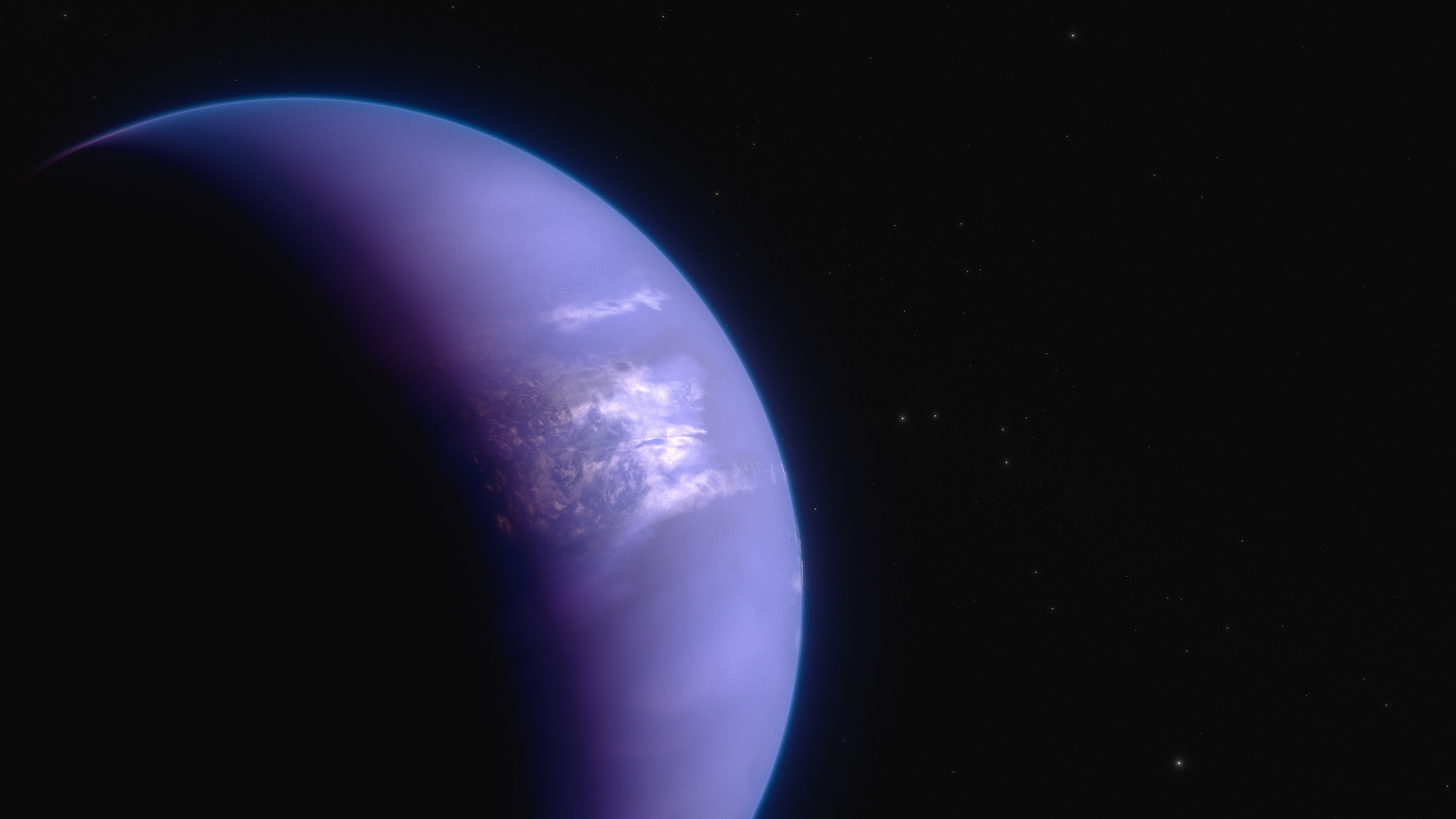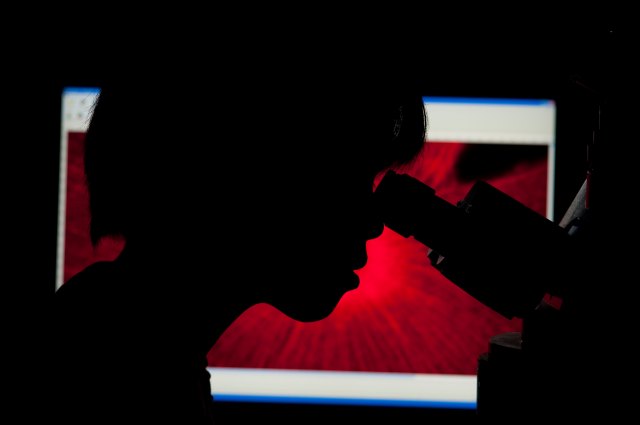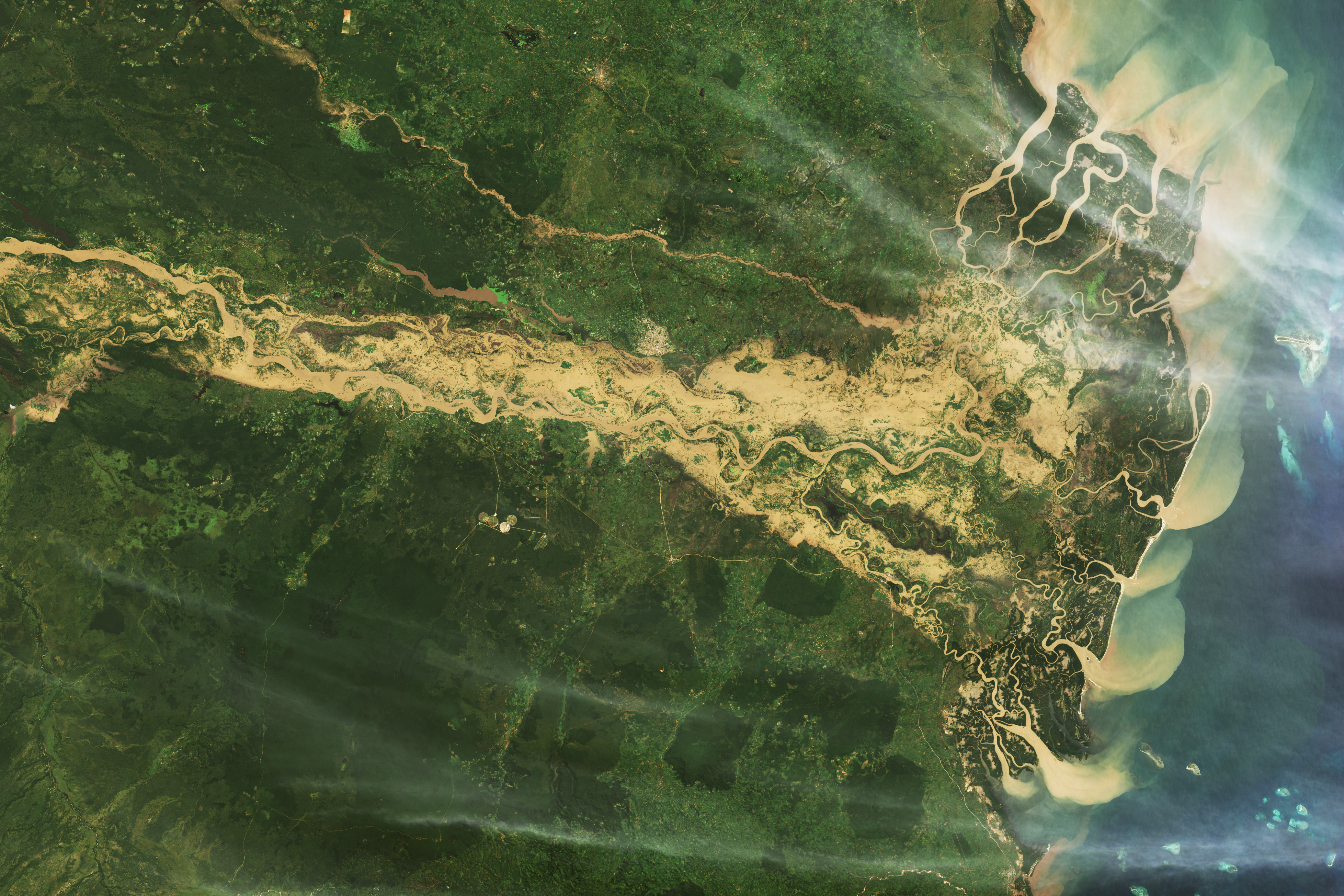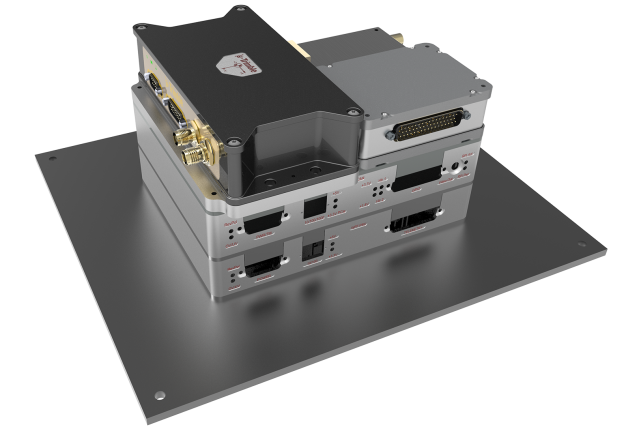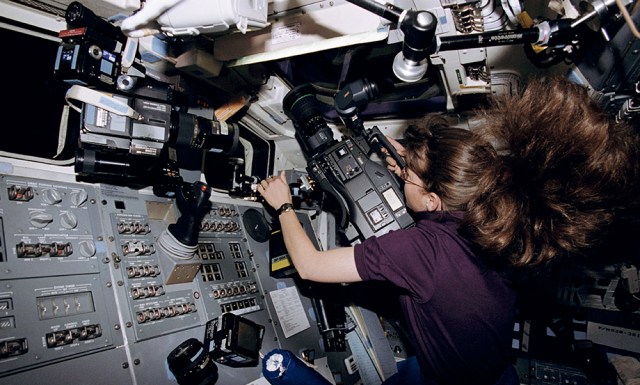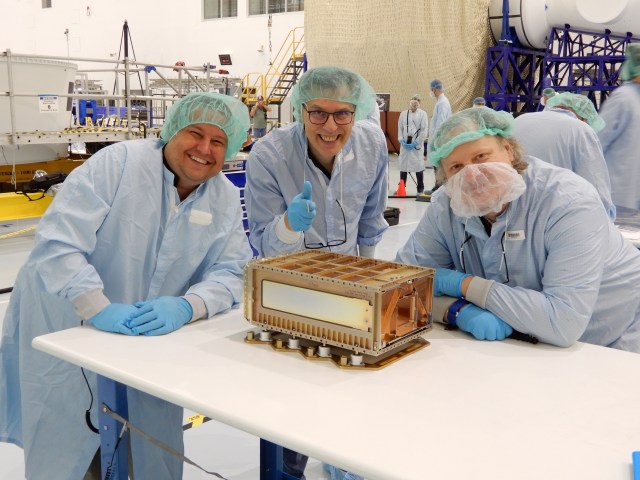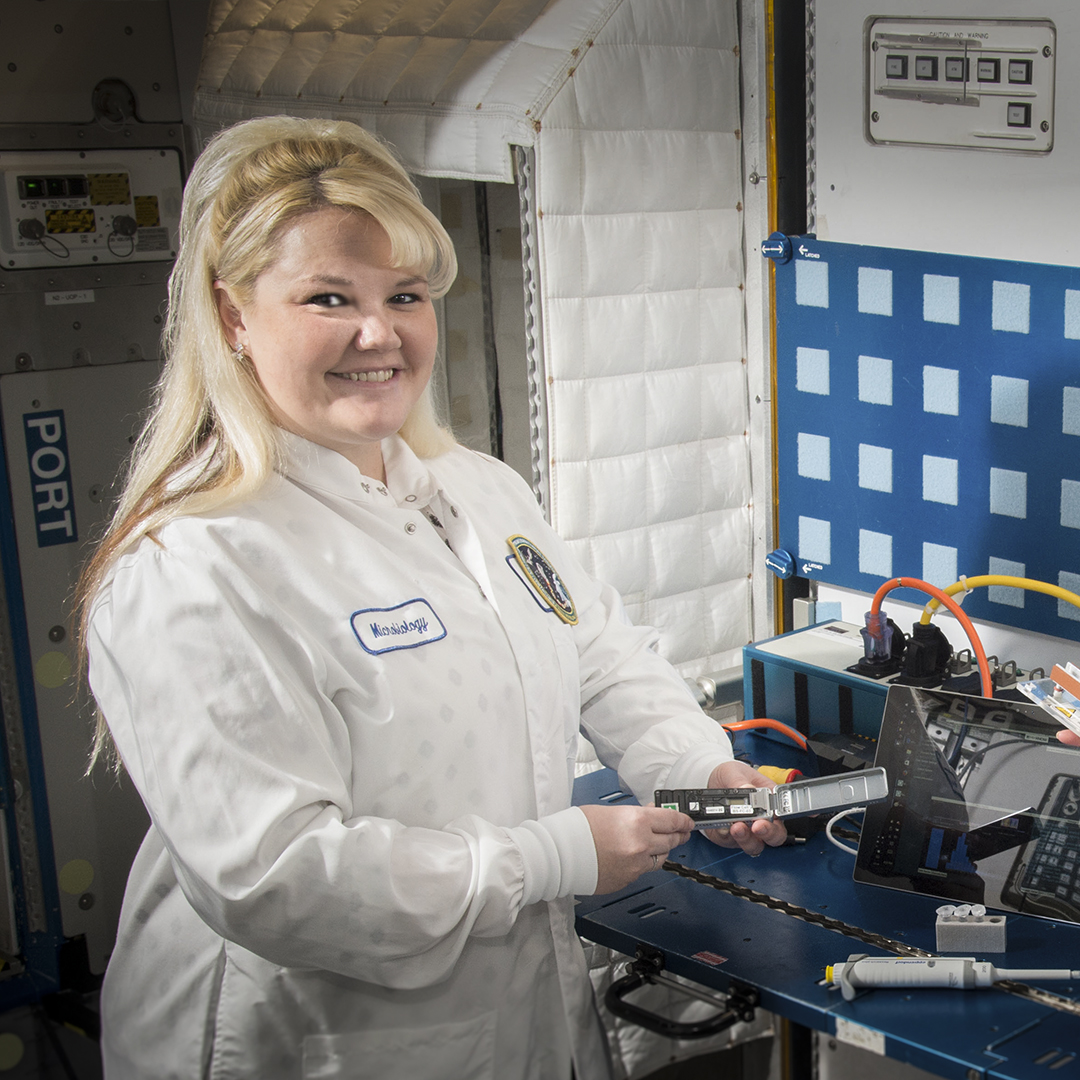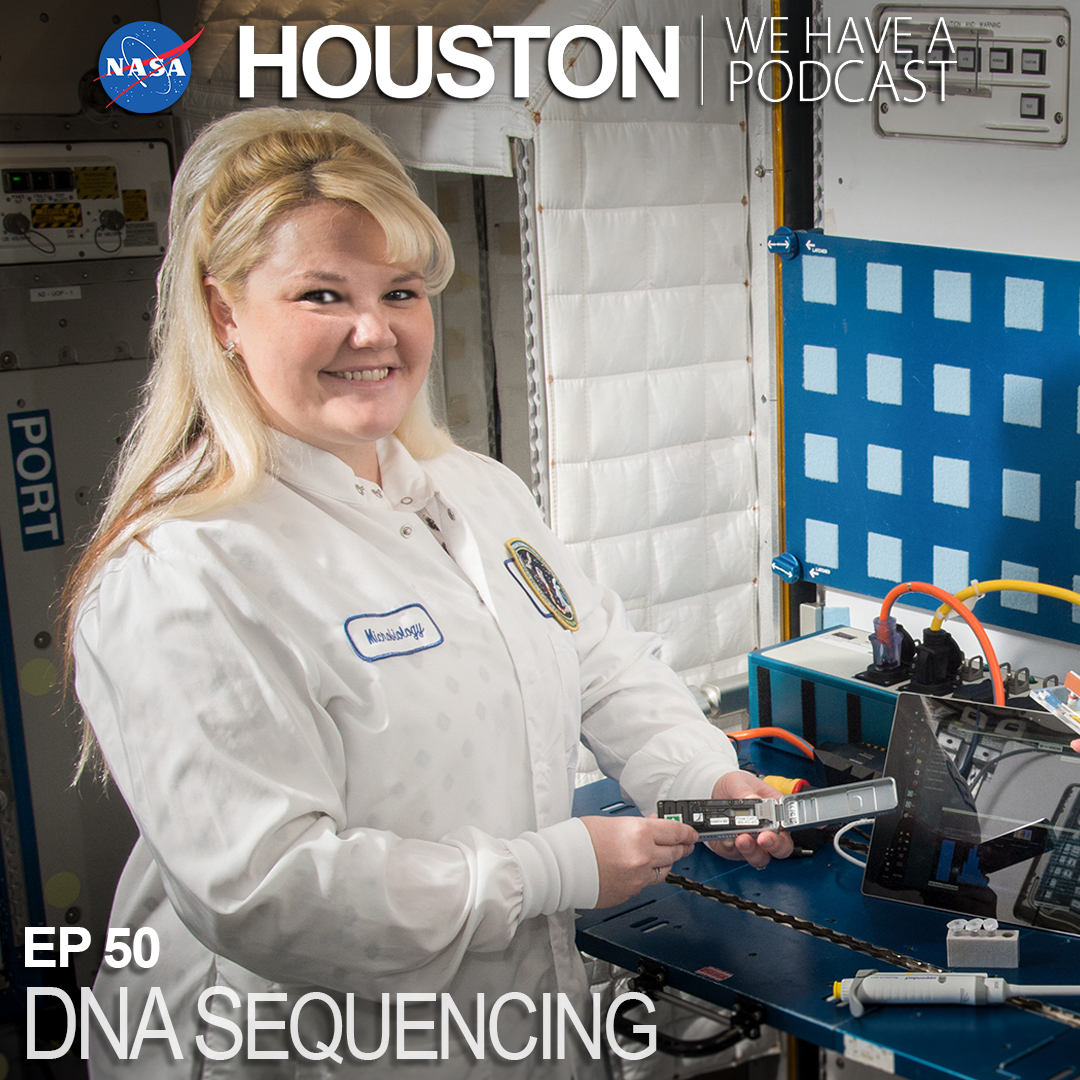
“Houston We Have a Podcast” is the official podcast of the NASA Johnson Space Center, the home of human spaceflight, stationed in Houston, Texas. We bring space right to you! On this podcast, you’ll learn from some of the brightest minds of America’s space agency as they discuss topics in engineering, science, technology and more. You’ll hear firsthand from astronauts what it’s like to launch atop a rocket, live in space and re-enter the Earth’s atmosphere. And you’ll listen in to the more human side of space as our guests tell stories of behind-the-scenes moments never heard before.
Episode 50 features Dr. Sarah Wallace as she shares with us her instrumental role in developing the DNA sequencer used on the space station as part of a multi-center effort led here at the Johnson Space Center. This episode was recorded on April 17, 2018.
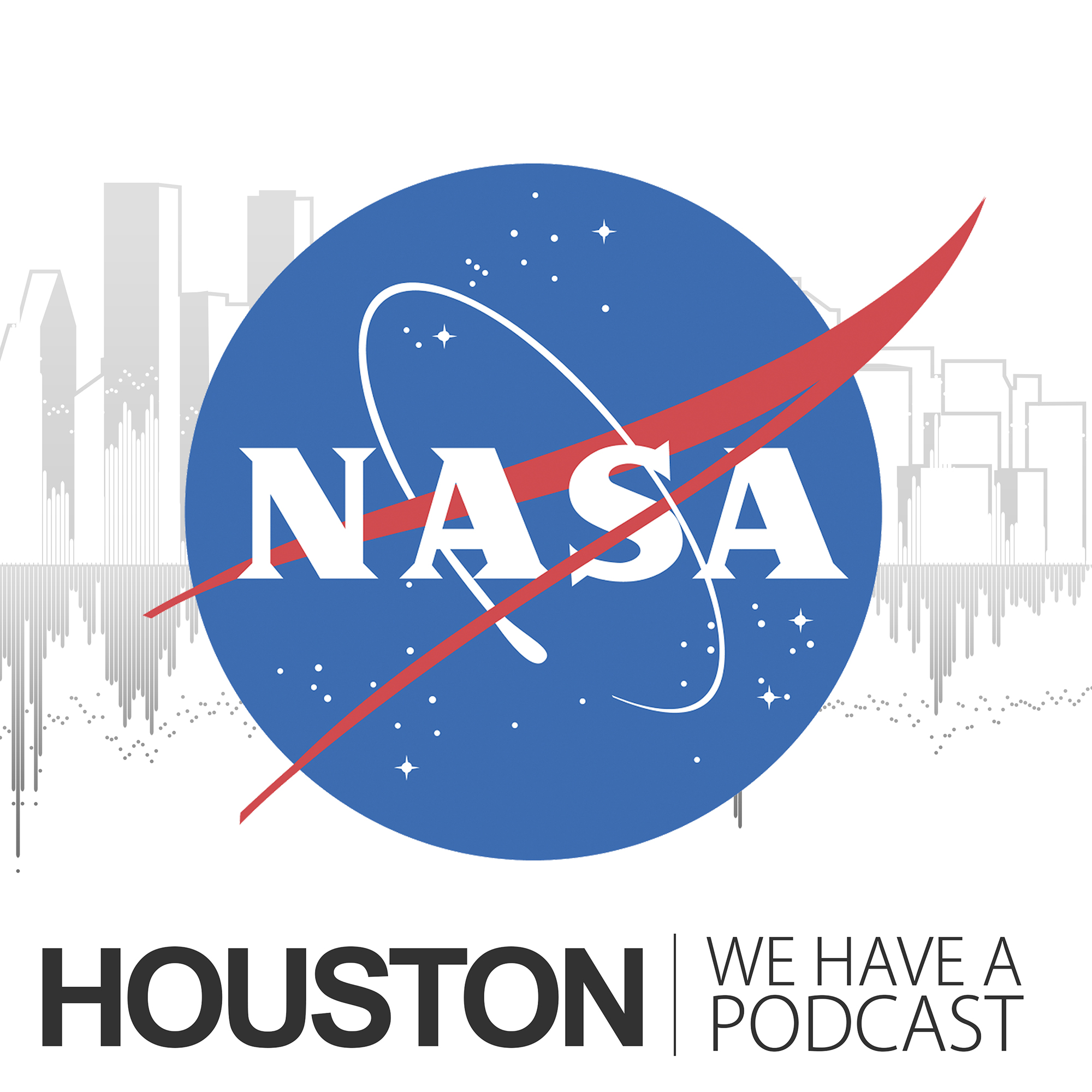
Trancript
Gary Jordan (Host): Houston, We Have a Podcast. Welcome to the official podcast of the NASA Johnson Space Center, episode 50, DNA sequencing. I’m Gary Jordan, and I’ll be your host today. On this podcast we bring in the experts, NASA scientists, engineers and astronauts, all to let you know the coolest information about what’s going on right here at NASA. So today we’re talking about DNA sequencing on board the International Space Station with Dr. Sarah Wallace. First a little background, DNA stands for deoxyribonucleic acid. This basically serves as a blueprint for any organism. DNA provides detailed instructions on how to make a living thing what it is, whether it’s a banana tree, bunny rabbit or human being. DNA sequencing is when you take a small sample of a living thing, such as a mold from the kitchen sink or cheek cells from your mouth and extract the DNA from the cells. Then you determine the order of the nucleotide basis. This is the order then that’s matched with the patterns of known organisms. Thirty years ago, first-generation DNA sequencing machines could easily take up an entire laboratory’s worth of space.
Now we’re using a sequencer on the International Space Station that could literally fit inside of a pocket. So today, we’re talking with Dr. Sarah Wallace who was instrumental in developing this sequencer as part of a multi-center effort led right here at the Johnson Space Center. I’m particularly excited about this interview because DNA sequencing can be used for all sorts of beneficial things in space from monitoring the crew members’ health to identifying microbes, and even potentially detecting life in the solar system. So with no further delay, let’s go light speed and jump right ahead to our talk with Dr. Sarah Wallace. Enjoy.
[ Music ]
Host:Sarah, thank you so much for coming on the podcast today. Very excited for this topic because DNA sequencing, this is relatively new for spaceflight in particular, but it sounds super cool, but if you kind of know what it is. And that’s the thing is whenever I was like cool, yeah, DNA sequencing in space. What is that? So, if we can just start there. What’s DNA sequencing?
Sarah Wallace:Sure, so DNA sequencing, like you mentioned, not new to labs here on Earth.
Host:Yeah.
Sarah Wallace:Definitely brand new to space. Traditionally, you know, we’ve been doing DNA sequencing on the ground for a couple decades now through different methods of doing it. But it’s definitely evolved to the point where the instrumentation could be small and portable enough that we could do it in space. The old, most of the sequencers, the other two that I have in my lab, they’re very large. They’re sensitive to vibrations. They require a large power draw. As you know, those are not things that are awesome for spaceflight. Makes things a little difficult. So when this new technology came out that would really let us achieve the same thing, which is obtaining the sequence of DNA in a smaller platform, that’s what’s really allowed us to do it in space. So really, DNA sequencing is just that, just determining that order of those four bases, the A, the G, the T and the C, that if you sometimes see all those kind of, just looks like a bunch of letters and looks like it doesn’t mean anything.
But that’s that sequence that makes up every living thing. And so this instrument is letting us determine that sequence.
Host:So I hate to back up even further than that, but you’re talking to a marketing major here. So if we’re to backup to DNA and these four letters, what is that?
Sarah Wallace:So they’re made of, these are the nucleotide bases, so that’s really a sugar phosphate backbone that you have these, the bases on. So, do you just want me to say deoxyribonucleic acid?
Host:Yeah.
Sarah Wallace:Okay, like I didn’t know, like am I going too simple? Okay. So deoxyribonucleic acid, and so this is really, again, like it makes up every living thing. And so it’s, you know, one of the basic building blocks, or the basic thing that makes up these blueprints that we know all lifeforms on Earth have this very similar, incredibly similar structure that if we can determine the sequence, that can tell us, either tell us all about that living thing, even if it’s something small like a microorganism. Even tells who that living thing is. So it’s really just an abundance of information that we can get on something.
Host:So, basically, the order of these four things spread out over how many characters? Millions? Or is it millions?
Sarah Wallace:Yeah. Yep, depending on if we’re talking about for a human or for a plant or for bacteria. You’re going to have different size genomes. So this makes up your genome. And so what those four letters do is that they code for genes. So a sequence of these four letters make up a gene. And it’s those genes and the way that they get turned on and off that tells our bodies how to respond to certain environments, and they’re telling our cells when to grow and when to, you know, all these different things. So by looking at the DNA, we have the genes. And then we need to take it a step further to look at the RNA which is, DNA is transcribed into RNA. And so by looking at the RNA, which is what our next experiment is going to do, that gets back to the telling us which genes are on and off. So the DNA in theory should always be the same, unless it’s changed by something like a mutation. Now your gene expression, that’s something that’s changing all the time. And we do that by measuring the RNA.
Host:Interesting. This is a complicated world.
Sarah Wallace:It is. I’m sorry. I’m not doing a good job.
Host:No, you’re doing great. It’s me who didn’t study enough in school.
Sarah Wallace:Well, and I’m jumping ahead and all over the place.
Host:But if I were to sort of take it down to my brain capacity, this, a gene, for example, is, and correct me if I’m wrong, the color of your hair. So a gene is going to say, you have brown hair.
Sarah Wallace:Yep.
Host:And then this sequence is going to say, this person is going to have brown hair based on this gene.
Sarah Wallace:Right.
Host:Okay.
Sarah Wallace:Yeah.
Host:But it doesn’t, it’s not like it’s going to identify this long string of letters and just like this is Dr. Sarah Wallace.
Sarah Wallace:We’re getting there.
Host:Really?
Sarah Wallace:Yeah, we’re getting there. So with a microorganism, that’s exactly what it’s going to do. It’s going to tell me who that microorganism is. And for me as a microbiologist, that’s what I want to know.
Host:That’s awesome.
Sarah Wallace:I want to know, yep, I want to know who that is that could potentially make the crew sick or be a problem to the ISS environment. A lot, there’s a lot of companies, I’m sure you’ve seen the commercials on TV for send us your DNA sample, and we’ll tell you all about you.
Host:Yeah.
Sarah Wallace:They’re getting into the, it’s getting pretty specific to where if you, you know, you can find out a lot about somebody’s background, their heritage, maybe what certain, you know, diseases they might be more likely to have. So it’s, we’re kind of right at that point I think. And again, I’m a microbiologist, not human. But a dose of the human genomes. But we’re kind of right at the cusp of where that’s really starting to take off to where you could start looking at things like personalized medicine based on your genome. And that’s really where a lot of research is headed.
Host:Is it fair to say that that’s huge.
Sarah Wallace:Uh-huh.
Host:Yeah.
Sarah Wallace:Yeah.
Host:That’s a big one, right?
Sarah Wallace:Yeah. And, you know, especially for NASA. These are, you know, we have a, you know our crew is, you know, they’re a healthy population. So, you know, we’re not looking necessarily if they have these diseases, but if there were a way where we could understand if a crew was more, would metabolize a certain nutrient better, or there was a way we could alter it based on their genome, that may be a countermeasure for being able to, you know, if certain nutrients are limited or, you know, the body isn’t absorbing them, that you could really handle that at the level of the genome.
Host:So you can basically identify where the gaps are, and you say you need this extra nutrient. Okay, add this to the diet. Or, yeah basically —
Sarah Wallace:Or if they’re taking it in, but they’re just not metabolizing it. And so they’re getting plenty of it, but it’s being excreted in their urine because their body isn’t metabolizing it as well as somebody else’s. So maybe there’s other things that you can do to help them increase their metabolism of that nutrient.
Host:Yeah.
Sarah Wallace:But the research is already kind of headed in that direction.
Host:Like maybe some sort of pharmaceutical that can help them to digest or something like that.
Sarah Wallace:Same thing. Same thing, yep. Yep.
Host:Okay.
Sarah Wallace:And maybe someone is more prone to be susceptible to a certain type of pharmaceutical or somebody else wouldn’t be. And those are things that we’re starting to really look at the level of the genome to provide insight towards.
Host:Wow, okay, so I guess, there’s a lot of things to look forward to in the future, but in terms of DNA sequencing, I guess right now on the Station, we’ll start with what are we doing now? What are we learning now on the Station with sequencing?
Sarah Wallace:So our very first experiment on the biomolecule sequencer —
Host:Yeah.
Sarah Wallace:Dr. Aaron Burton was the principal investigator of that experiment. That was really to take this new piece of technology, this very small sequencer that, again, the output of what it gives you is the same as these big ones. It just does it in a very different way. But does this even work in microgravity? Before we start developing a lot of ways to prepare the sample, does this thing even work? So that was the first experiment. And that’s the one that, you know, Kate Rubins, I think that picture’s been seen a lot, her holding it with her success, the first DNA sequencing. And that’s really what it was. We prepared the DNA on the ground here on Earth. And then we launched the DNA. We launched the sequencer. And everything worked beautifully. Much better than we could have expected. And so then the follow one that we were already working on at the same time, we had gotten funding to develop, was that sample prep process. Because the sequencer is no good if you don’t have a way to prep your sample. And every sequencer, this very tiny one to the larger ones, you have to put the DNA in a state that the sequencer can recognize it or read it. So that sample preparation part is key no matter what DNA sequencer you’re using.
So that was really where the, where some of the got yous would be is how do I basically put my entire molecular biology lab on ISS? And so what we were really doing was finding ways, you know, using what was already out there and technology that was already up there, and just how can we tweak procedures to make this as easy for the crew to do as possible but get us meaningful science.
Host:Did size have a lot to do with it? You were constrained on how much you can bring up and how much you can have, you know.
Sarah Wallace:Exactly.
Host:Yeah, yeah, yeah.
Sarah Wallace:Size and power and, you know, something that we use a lot of on the ground is a centrifuge. And while there are centrifuges up there, they’re not, they’re not exactly the same ones we would use for this type of, you know, to do the molecular biology where you just quickly pop in a little tube in and out. They’re very specialized. So they weren’t available to us. So it was actually a piece of equipment that was already up there that was called mini PCR. And that PCR stands for the polymerase chain reaction. And that process is just amplifying DNA. So you can think of it kind of like a photocopier for DNA. So if you have a very little amount, you can turn it into a lot. And that’s a common first step in any molecular biology process but especially DNA sequencing. That’s usually a first step thing you’re going to do. So that was already on board. It was actually, the Genes in Space program, which is a high school student, high school students get involved, and they can propose an experiment. So the first molecular biology experiment ever done in space as a high school student, which I think is just cool. I just think, you know, way to go.
Host:Yeah.
Sarah Wallace:And so we were able to partner with them, our biomolecule sequencer and mini PCR, and we became Genes in Space-3. And so what that was, Genes in Space-3 was really to show that we could go all the way from a sample to an answer. And what we chose as our sample for that was actually microorganisms that have been collected from and cultured on ISS as part of my lab’s normal job is to monitor the ISS air, water and surface for what’s growing up there. So we already have this stuff growing up there, but it wasn’t a part of our process. So we were able to pull in some of those bacteria and actually have the astronaut sequence them on board, which is the first time we’ve ever identified anything off planet Earth. So super exciting.
Host:So the sample was the stuff that’s growing. What’s growing? What’s growing up there?
Sarah Wallace:Well, it’s not all necessarily growing, but some of it is. There’s everything. So ISS has a microbiome just like we do. So, every, you know, we don’t send up a sterile vehicle. We don’t send up sterile crew. We don’t send up sterile anything. You know, cargo, hardware, food, everything has microorganisms that it’s taking up there.
Host:It’s as sterile as we can make it, but —
Sarah Wallace:Well, and we do our best to reduce potential pathogens from getting up there. But as I think we’re starting to learn, there’s a healthy balance. There’s very beneficial microbes. And we’re still working on understanding how those in the environment interplay with us as humans in our daily life. That research is just starting to get underway.
Host:Yeah.
Sarah Wallace:But, what we want to do is make sure that some of those potential pathogens that we carry with us aren’t there in high abundance to where a crew could come in contact with them, or they would get into the water system and something could foul up the water system and cause problems for the vehicle that would be a problem for everybody.
Host:Yeah.
Sarah Wallace:So that’s part of our normal. We’ve been doing that since the beginning of Station.
Host:Right.
Sarah Wallace:And the astronauts actually are physically culturing the bacteria and the fungi that are up there.
Host:Is this a normal part of living in a contained environment, I guess? No matter what kind of contained environment, there’s going to be this microbiome —
Sarah Wallace:Absolutely.
Host:these fungi bacterial that are just going to. But you have to learn to coexist with them in this type space.
Sarah Wallace:Absolutely. Right.
Host:And that’s really what it is.
Sarah Wallace:Yeah, and really just reducing the risk. If we find something that, there are definitely things we carry as people, but you know, they’re fine when they’re on us. But we don’t want them out in the environment in high numbers where the crew has a scrape or something. They accidently bump up against it. They get it in there. You know, there’s, we just want to have the environment be as free of those types of things as possible.
Host:Sure.
Sarah Wallace:And also the things, like I said, that could foul up one of the environmental life support systems because something’s growing in them. Which is something we have to keep a close eye on. So, that’s really the why we do this monitoring in the first place is just to see, making sure the environment is leading to the least amount of risk possible.
Host:So what’s the normal monitoring that you do? And then what was this, you said there was a sample and then answer section of the DNA.
Sarah Wallace:Yes. Yep.
Host:So what are those two components?
Sarah Wallace:So the normal monitoring is this basic have the astronaut collect from the air, the water, the surface, a sample, and actually grow the bacteria and the fungi. That’s what we do all the time.
Host:Cool.
Sarah Wallace:Then we get about an idea of about how many is there, but we have no idea what it is. And as a microbiologist, I would argue that oftentimes, with some of these environmental bugs, sometimes what it is can be more important than how many there are. When you drink water, you’re drinking bacteria, and it could be in relatively high number. They don’t hurt you, but if just a few of the wrong type are in there, you’re in for a rough night. And anybody that’s ever had food poisoning or anything kind of knows, yeah. You don’t want the crew to experience that. So, it’s really important to know what it is, not just how many there are. So we, up until very recently, we have never been able to have that answer in space. We have to wait until those samples come back to the lab on the ground here and for our microbiologists to be able to process them and provide an answer. And we do that through DNA sequencing. So now, with Genes in Space-3, we were able to take one of those samples that we would normally return, and we were able to actually have the astronaut take some of the cells that had been grown and put them through our mini PCR process into the MinION, which is the DNA sequencer, and actually, we were able to get the data down of what was growing on those petri dishes before we even got the petri dish back.
So that was, again, that’s really something we need to be able to enable, you know, human exploration beyond ISS. So it was, for me, that was one of the most exciting moments I’ve ever had in my career was seeing, you know, sitting there watching the data come down and watching us analyze it and see the IDs pop up, just because it’s not a capability we’ve ever had.
Host:Yeah. So you’re basically scrubbing the station and putting it into here, hey, is this going to hurt me. And then you put it through the DNA sequencer, and you can find out pretty quickly, no, I’m good.
Sarah Wallace:Yep.
Host:And that’s really the benefit rather than waiting for a return mission.
Sarah Wallace:Exactly. Exactly.
Host:Okay, yeah.
Sarah Wallace:Yep, because imagine if you’re not on ISS, and you have a limited supply of antibiotics —
Host:Yeah.
Sarah Wallace:If you have a wound infection, do you treat it with the antibiotic, because maybe it’s something we need to worry about. Or, is it an acne-causing bacteria? Like, don’t waste the antibiotic. Let’s save it. Because we can’t resupply. And same thing with the disinfectant wipe. If something’s growing up on station, which we’ve seen it, do we need to waste all of our disinfectant wipes to go clean that up? Or is it something that we don’t need to worry about until later down the road? So it’s really those types of questions that we get into that I think the sequencer is going to be hugely powerful in helping us address.
Host:Yeah, just basic, yeah, okay, I can coexist with this for a while. It’s not going to hurt me. But then also, identifying okay, this, if I have this particular type of bacteria, now you’re talking about efficiency of pharmaceuticals. You’re talking about, you don’t waste, don’t waste this one, because it’s not going to work. Because the DNA sequencer identified it as this, therefore, you need to use this pharmaceutical.
Sarah Wallace:Different, yep.
Host:Wow, that’s significant.
Sarah Wallace:Yeah, and it’s just, you know, and this is, again, this is all very micro-specific, because that’s what I do. But those things we talked about early on, that’s really the research is starting to be there on the human health front. You know, how are humans responding to things and, you know, measuring changes in the crew members’ gene expression and things like that that really, you know, I think, so much beyond just microbes. But for now, the microbe part for me is just huge and exciting.
Host:You’re right, there’s those steps, right. Let’s deal with the microbe now, but then eventually, we’ll be able to identify, that’s Sarah Wallace.
Sarah Wallace:Yep.
Host:We’ll get there. You know, we sort of addressed it in the beginning, but I don’t think I circled back to it. One of the main things for the MinION is what you called it right, whenever you were first testing it on board the station was to see does this thing work in microgravity.
Sarah Wallace:Correct.
Host:So, what were the concerns that it wouldn’t?
Sarah Wallace:Well, everything, the way that the sequencer works, your DNA is in a fluid. It’s in a buffer. And there’s some salts, some other things that, there’s, that when you turn on the sequencer, basically these things start to flow through these proteins. These are actual proteins. We call them nanopores. So it’s a nanopore sequencer. So they’re the same type of proteins that your cells have and my cells have that let ions in and out of our cells. It’s those same proteins in a membrane. And as the DNA, well, let me back up, as those salts that are in the buffer flow through there, a current is created. As the DNA molecule passes through, it changes that current. It’s the change in current that the software then takes and changes it into the AGTC sequence that we’re looking for. So with that, the fluid and the buffers, all of that, any time there’s fluidics involved, you never quite know in microgravity.
Host:Yes.
Sarah Wallace:On the ground, we have issues where if accidently when you’re loading your sample a bubble is introduced, that bubble is very problematic. Was that going to be the same in space? So it was some very, pretty simple fundamental questions in terms of just the operation of such a small device and, you know, the crew working on a small scale. Then back to kind of the fluidics issues with bubbles, things that we just really didn’t know until we got it up there.
Host:Yeah, one of the things I always go back to with fluids is, I mean, if you just see any video of water is space, it’s one of the coolest things to watch.
Sarah Wallace:Yep.
Host:Because you think, the primary force on Earth that controls water is gravity. That’s what helps it stick to a cup. But at the same time, you’re going to get little sweat beads, and that’s the surface tension. Surface tension dominates in microgravity.
Sarah Wallace:Yep.
Host:And I could see that really, really messing with, but I mean, so you said you didn’t have any problems. How much of it was because you had Kate Rubins, who’s an expert in this sort of thing, dealing with it versus the capability of the machine. If you said everything’s working perfectly, I’m thinking it’s the latter.
Sarah Wallace:I think, I think it’s the latter as well.
Host:Yeah.
Sarah Wallace:I think that, right now we’ve been so fortunate. We’ve had Kate Rubins and then Peggy Whitson.
Host:Yeah.
Sarah Wallace:So couldn’t, yeah, couldn’t ask for better hands in terms of come from a lab. I mean, that’s what, these are scientists.
Host:They’re scientists.
Sarah Wallace:That’s what they do.
Host:Right.
Sarah Wallace:So for them, it wasn’t a foreign thing. We have, again, microgravity isn’t at play here, but we have had multiple astronauts test this for the last two NEEMO expeditions, which is the NEEMO is a, it’s Nasa Extreme Environment Mission Operations. So it’s Florida International University owns this habitat that sits on the ocean floor off the coasts of Key Largo.
Host:Aquarius.
Sarah Wallace:There we go.
Host:Yeah.
Sarah Wallace:Thank you. And every, NASA rents it out for a couple weeks during the summer to send some of their astronauts to train. So last two summers we’ve had a lot of different astronauts get their hands on it from this, so we’ve actually had far more than just Kate and Peggy run the sequencer. And in extreme environment, we just haven’t, we’re working on writing up those papers, and they just haven’t gotten talked as much about. But I think that speaks to the, just the device itself and how well it was designed, that it really is, we’re doing something very, very complex. But the system is pretty simple to use, and then I like to think that the process that we’ve developed to do the sample prep is also pretty simple. Of course, there’s, we’re trying to make it better and even more simple and more automated. But it’s working, and we’re really excited to see where it all goes.
Host:So what were they identifying in Aquarius? Were they scrubbing like the ocean floor or something?
Sarah Wallace:So here’s the kicker with this. So we are still focused on the inside of the habitat.
Host:Yeah.
Sarah Wallace:But what we were doing was we were having the crew swab a surface. That swab was going directly into the process. So we were removing the need to first culture the microorganisms. So how great would that be if we didn’t, if we have potential pathogens, if the crew never has to turn them from, you know, a couple hundred maybe on the surface to millions. And we could remove that step completely. And so what we do right now is a culture-dependent process. What I hope to see in the future is a culture independent process. That’s what we’ve been working on getting ready at NEEMO for our next spaceflight investigation.
Host:So I might be missing a step. Is this that PCR component where you’re making a lot of copies and —
Sarah Wallace:Kind of.
Host:Okay, okay.
Sarah Wallace:So we’ll still need PCR, but PCR you can think of PCR as copying the DNA.
Host:I see.
Sarah Wallace:That culture, you can think of the actual, they’re growing. They’re living, they’re growing, those cells are dividing. So you’re amplifying the material, but those cells are living, you get the big fuzzy spots from the fungus and the big colonies from the bacteria. So removing that part. So you would still amplify the DNA, but you would never have to increase the number of organisms that you had originally in your sample, Which culture, that’s what you’re doing, you’re increasing the number of living organisms.
Host:Okay, what’s the, is there a fancy culturing process in order to make sure that these things, or is it just, what do you do to culture them? To make sure that they go through this process.
Sarah Wallace:That’s, it’s the same way, it is good old microbiology 101. The same way, if you ever took a class where you went and streaked something out and streaked it across the plate, that’s the exact same thing the astronauts are doing.
Host:That’s what you’re doing. Okay.
Sarah Wallace:There’s, picture a petri dish with the food in there, and that’s the same thing. So it’s the way microbiology has been done since the beginning. The way we’ve been doing microbiology since Apollo.
Host:Wow.
Sarah Wallace:It’s great. It’s the gold standard. It’s you know what you have, you know. There are some drawbacks, as are with anything. And I just think moving away and not needing to do that in the future would be huge.
Host:Yeah. It seems like there’s a lot of microbiology components to flying in space that maybe you wouldn’t normally think about.
Sarah Wallace:I think, yeah, I think we’re a little underrated. I don’t think people think enough about us. There are, I mean, and it’s, I think a lot of people, you know, take it for granted. We, you know, keeping the crew safe and healthy is what everybody who works for NASA in some way, shape or form is, that’s what we care about. But if anybody’s ever, you know, you’ve had strep throat, you’ve had, you know, something, a cut that gets infected. You know, you’ve been plagued by these things.
Host:Yeah.
Sarah Wallace:Infectious disease is an issue that everybody has dealt with. And just because we send astronauts up there, they may not be exposed to the flu virus or the cold virus as often as we are, but they’re carrying up those bacteria and things with them that could potentially make them sick.
Host:That’s right. And how cool would it be if you can just use this mini PCR, and you have a little bit of a cough. And you take a little swab and put it into the mini PCR, and you’re like okay, this is this kind of flu or common cold or something. And then okay, I need to take these antibiotics or something.
Sarah Wallace:That’s my goal. So the two-part. You do that, you just, whether it’s a swab or, you know, you just something into mini PCR and then into the MinION. So we amplify it, and then we sequence.
Host:Amplify, sequence.
Sarah Wallace:And then that will give, and that’s, we’re doing that right now with just the swab. So I can envision it, you know, as the technology becomes more sensitive and we start to understand this kind of culture-independent data better, and develop proper standards and controls, I can really see it going in that direction.
Host:So you talked about Genes in Space-3. And I know there’s been more. So what’s the sort of progress that you’re taking to learn more and more about this study?
Sarah Wallace:So, the biomolecule sequencer was the first.
Host:Okay.
Sarah Wallace:That’s the, we’re going to, that’s what we called the MinION. That is the actual, is the company name of the sequencer. We call it the biomolecule sequencer.
Host:It’s a commercial off-the-shelf product, right?
Sarah Wallace:Exactly.
Host:Okay.
Sarah Wallace:Oxford Nanopore Technologies and really the only sequencer out there that I can put in my pocket and fly to ISS. You know, it’s really that small.
Host:Wow.
Sarah Wallace:And it’s smaller than your smartphone. So the other, and then mini PCR is also extremely small. So the first one was just a biomolecule sequencer. Genes in Space at the time, we were not collaborating with them. That was a high school student’s experiment, just to show same thing, DNA can be amplified in space.
Host:Right.
Sarah Wallace:And then we collaborated, and that was Genes in Space-3. And we’re continuing our collaborations. The next investigation is called BEST, the BEST experiment.
Host:Very humble.
Sarah Wallace:Right. Stands for Biomolecule Extraction and Sequencing Technology. Really, what we’re going to do with that is just everything we can. We’re going to take advantage while we have a little bit left of this extra crew time, of this crew member, we’re going to take advantage of as much science as we can get done. So that swab process I as talking about, where we just have them swab and stick that swab directly into the process, never culture anything. We’re going to try that out. We are also going to do some evolution-type experiments. We’re going to send up some bacteria that are common water bacteria that, you know, no one, that are very, they’re safe to handle. Send them up and have them grow and then have the crew do some transfers of them. So we get a lot of generations of them reproducing. And see if we can start to see by sequencing their entire genome, see if we can start to see any changes due to mutation. And so this is something that, you know, a lot of people have been working on trying to define a mutation rate. It’s hard if you don’t have a proper ground control where you’re tracking the same thing.
And so people ask me all the time as a microbiologist, well, do things mutate? I don’t know, because the staph aureus that we isolated from the Space Station, I don’t have that exact staph aureus before it launched. So I can’t say if it mutated. But this, we will have, we’ll be able to start to get some insight into maybe how susceptible, at least this organism, is to radiation and if we can see any changes at the level of the genome. So then the next experiment, and I’m equally excited about all of them, but I’m very much excited about this one.
Host:You can tell.
Sarah Wallace:We will be sequencing RNA directly. This is a big deal because this is really the only platform out there that you can do direct RNA sequencing. Most of the time, you’re converting RNA back into cDNA to be able to sequence it when you’re doing these types of experiments. But with the Nanopore sequencer, we can sequence RNA directly, meaning we don’t have to do a lot of things to change it. So I’ll tell you why this is important. You yourself have your DNA in you right now that is, it says who you are, and it makes you up. But it doesn’t tell me anything about what you are experiencing right now. If I’m just looking at the DNA, actually there are ways that it could tell me some things. But we’ll keep it simple. So, but if I want to know things about how you’re responding to your environment, I want to know what genes are being turned on and turned off.
Because let’s just say you have 100 genes. You have much more than that, but let’s say you have 100. You don’t need all 100 all the time, so your body is not going to waste energy expressing all 100 all the time. So maybe right now, sitting here talking to me, you’re just trying to keep your eyes open, so you’re only using those 20 to do that.
Host:I’m trying to pretend I’m smart. That’s what I’m doing right now.
Sarah Wallace:You’re doing a great job. So if I wanted to know that this environment of me talking to you is doing, I would want to know which genes are turned on and turned off.
Host:Okay.
Sarah Wallace:In space, that is kind of the goal is how are organisms, how are living things responding to space. And how we do that is looking at what genes are on and what genes are off. So to turn a gene on and off, you transcribe it into RNA. So that DNA makes RNA, which eventually goes on to make a protein, which will do something. But it’s that RNA that’s telling, that we can look at and see what kind of environment you’re in. So we know the gene expression changes. Every time we’ve done a spaceflight experiment or we look at a living thing, we see their gene expression changing. That’s just, it does because you’re in a, you need certain things in space. Certain genes need to be on and off that aren’t the same as they would be on Earth. Whether it’s due to radiation or microgravity or you’re changing your diet. All of these things. We’re really now just trying to understand all this and pick it apart. So if I have a capability to where I can sequence RNA directly without having to turn it back into cDNA, which we do for most of the sequencers on Earth, and I can do it right there, I can gain a lot of insight into how these things are responding and when.
And it’s really important, because they change over time. And so to be able to track that and do it would give us just a huge amount of insight that we haven’t had. So with this experiment, that’s what we’re going to do is we’re going to sequence RNA directly and actually have the crew, RNA is a little less stable than DNA. It’s a little bit more difficult to work with. So have the crew go through all the steps of preparing it and sequencing it.
Host:So I’m trying to think of an example to sort of wrap my brain around this. So if you were to swab, I guess, some of the microbiome [phonetic] in this station, right, and then we’ll just say the DNA would tell you this is kind of microbiome it is. What would it say, what would the RNA tell you about how it’s reacting? What do you expect?
Sarah Wallace:That’s what it was. So the DNA would tell me who is there.
Host:Yes.
Sarah Wallace:The RNA would tell me what genes were being turned on and turned off. So it would tell me what that system, as the whole, what they are doing. So are they metabolizing the surface that they’re on? Are they being able to, are they producing, are they giving off some kind of, you know, different compound? Or is it just a simple, are they just respiring? So it would tell us the function more what they are doing. It gives more towards that functionality. And so, with our cells, it tells us, again, are you able, are you building up muscle? Are you tearing down muscle? Are you, those types of things that —
Host:Wow.
Sarah Wallace:Yeah. To really get at what’s going on in the whole system. Aaron is my analogy guy. I should have asked him for a good analogy.
Host:That’s a great analogy.
Sarah Wallace:He’s good. But that’s, it’s really, it’s what, the DNA tells you what capabilities are there. The RNA tells you what’s actually happening.
Host:So it’s like, okay, so I’m going to scale it up a bit to humans. And tell me if I’m wrong again.
Sarah Wallace:Okay.
Host:So, the DNA would tell you, this is, let’s just say Gary’s flying in space. This is Gary. He has brown hair and, you know, brown eyes, and he’s this tall. That’s what the DNA tells you. The RNA is going to tell you he is losing muscle in this area. His eyes are changing this way, and he’s kind of nervous and scared about doing this podcast.
Sarah Wallace:Yes.
Host:Yes, that’s what it would tell you.
Sarah Wallace:There we go. Yes.
Host:Okay, good.
Sarah Wallace:Yes. And all those little things about, all those different systems and how they’re functioning together and separately, you know, and just how everything you said.
Host:Okay. All right. Very interesting stuff, and especially there’s a lot of applications that can go forward. I did want to circle back to just microbiology and you. How did you sort of get into this world that turned from microbiology to space microbiology?
Sarah Wallace:So it all started space for me. I’m one of —
Host:Space first, okay.
Sarah Wallace:I’m one of those, yep. So I am very fortunate to have grown up in a small town in Kansas. That small town in Kansas was located within about an hour drive to another small town in Kansas, Hutchinson, Kansas, which is home to the Kansas Cosmosphere and Space Center. I tell everybody if you’re a space nerd, you have to go there. It’s the largest collection of spaceflight memorabilia anywhere in the world, both US and Soviet at the time, Russia now. Just a phenomenal collection. Apollo 13 is there. I think the Liberty Bell is traveling around, but it was there. It’s where we’re sending pieces of mission control to get restored. So it really, it really is like, this is where you go to nerd out.
Host:Yeah, that’ll get you into space.
Sarah Wallace:And they had a space camp, so I know it’s not the space camp in Huntsville. But I went to that space camp. And so, just really, my sixth grade science teacher, Jim Lester, just really, he inspired the love of space in me. And not only did we take tests over, you know, the solar system, like all sixth graders do, but we took tests over NASA history. And I just loved it. So, when I, it was really when I got to undergrad, I knew, I was always a biology girl. I was never that strong in math and engineering, so thank goodness that I didn’t need to do a whole lot of it. I had to do well in those classes to do well to get into graduate school.
Host:Yep.
Sarah Wallace:But my strength was always more in the life sciences in biology and chemistry. And so when I got into undergrad, I really, I didn’t know, but there was a professor there that had some NASA funding doing kind of astrobiology-type work. And he was like, come work in my lab for a little while, and that’s where I streaked my first plate as a microbiologist, and that was it. I was hooked from that day. And so, it was like how do I combine my love of microbiology with my love of NASA? And I found the University of Texas medial branch down in Galveston, which has a phenomenal PhD program in microbiology in case the whole space thing didn’t work out, I would have a microbiology, you know, degree from a good world-renowned program. So I was fortunate enough to, and then have that proximity, so was able to get a fellowship to do my research, my PhD research here at NASA. And then just never left.
Host:Yeah. You know, I hear that narrative a lot where you go for something knowing that if you were to just stay there, you’d be happy anyway. I see that all the time. And I think it’s such a good piece of advice, because if your ultimate goal is astronaut, which it is for a lot of people.
Sarah Wallace:It is for a lot of people.
Host:You know, you’ve got to take steps that if you were to no get to eventually astronaut, you would be happy for the rest of your life in whatever. I love that, yeah. I think it’s a good piece of advice.
Sarah Wallace:Great plan B.
Host:Yeah.
Sarah Wallace:And also, you know, STEM is so important, but I always tell kids, you have to be good in all of them. Find the one you’re passionate about, and if you struggle as you get into some of the harder math classes, that’s okay.
Host:Yeah.
Sarah Wallace:Or if you struggle in, you know, you don’t care about the biology, but you really like the chemistry. Whatever it is, you know, I just I think that’s good too.
Host:Just hang in there until you swab a plate.
Sarah Wallace:Exactly. And once, it’s magic once that happens.
Host:I love it. I love it. You know, talking about, you know, passion for space and sort of going down this path to eventually do microbiology for NASA, there’s one story that’s just, it’s stuck in my head. And that’s last year when Hurricane Harvey happened, and gosh darn we still needed to sequence that DNA in space, you were calling Peggy Whitson from your house because we were all trapped because of the storm.
Sarah Wallace:Yes.
Host:How was that experience?
Sarah Wallace:That, I was going to say, getting the data was probably the highlight of my life. That actually was probably the highlight of my life. So, the way we did Genes in Space-3, we did it in two separate portions so that it would be just easier to schedule and that kind of thing. So, the first part was to have Peggy collect some of those cells that were growing and put them in mini PCR. And then it can stop, and after that point, whenever there was time again, to come back and collect that. There was a little more prep she had to do to sequence it. So come back, get the DNA that had been amplified, and then finish prepping it for sequence and actually sequencing. So we had done the first part a week or two before Harvey hit. Everything went well. But of course, I’m just waiting, like knowing it’s so close. Let’s get these IDs. So, it gets put on the timeline for that Monday morning, and Harvey hits. And it became very apparent that the, the Center, it wasn’t like you could come in. It was like you’re not coming in. The Center was closed, and —
Host:The gates were under water.
Sarah Wallace:Yes.
Host:You literally like could not physically couldn’t.
Sarah Wallace:I could not. I could not leave my house.
Host:Yeah, yeah.
Sarah Wallace:It was awful for anyone that lives here understands. So, but me, you know, yes I’m worried about the house and the cars and all those things, my family. Should have said that first. But you know, for me it was like, we have the schedule, you know, the crew’s up there. They’re still doing their stuff. We need to support. So I’m usually enabled to talk them through the procedures just in case they have any questions or anything. So I usually communicate with them. I had taken my, everything home to be able to connect to the voice loops that allow us to communicate with the crew. But of course, my, the firewall was blocking my connection for my internet from home. So that’s when the people at Marshall Space Flight Center, the POIC folks were like, that’s it. We’ll patch you through to Peggy. And Peggy, she didn’t know, she just thought I was talking to her like normal. But I’m in my house, in my sweatshirt, and it’s raining and cold, and on my cellphone. And I usually have video. I can usually see what the astronauts were doing. This time I did not.
I was blind.
Host:Wow.
Sarah Wallace:So I was really, I had my procedure book. I knew where she was in the process. I knew what she was doing, so I was able to walk her through it. Went off without a hitch, like thank goodness there were no weird things that had to be troubleshooted. Everything went perfectly. And as the sequencer, what’s really cool about the sequencer is as it’s sequencing, you’re getting the data near real time. So, I don’t know if things are successful. I know what Peggy’s told me. But the folks at Marshall were able to get a camera view on the Surface Pro 3 that we had running the sequencer. And they were able to get a screen shot of me that confirmed to me that it was successful. So, we knew pretty soon after Peggy had hit go on the sequencer that it was at least sequencing something that was the size of the gene we were looking to sequence. And so, that was just, that was one of the most exciting moments. And when I got that text from Marshall with that picture, I sent to, you know, my whole team. And it was just a super, super exciting moment. And it really was.
It was like this, you know, not only this experiment but just science in general was not stopped because of Hurricane Harvey. And I just think that that’s, being here in Houston, and I just, I think that’s such a cool story. And for me personally, just because it was a huge, a huge first in space. You know, if you think about what we were doing, we took bacteria that had been collected from and cultured entirely in space, and then we sequenced them and got the AD entirely in space. So we did all of this that normally takes the whole lab off of the planet. And I mean, it was just a big huge first, and we’re really excited.
Host:And you still got the data in your living room on a cellphone.
Sarah Wallace:Yep.
Host:And like you said, doing it blind.
Sarah Wallace:Yep.
Host:Doing it, just reading the procedures, not getting a video feed.
Sarah Wallace:Yep.
Host:That’s a testament to the technology, but then also, just the communications from mission control. It’s a, that’s a huge accomplishment really.
Sarah Wallace:Thanks. And the people at Marshall, like they were, they knew that, you know, they’re always running the payloads, but they knew that time especially that there just wasn’t anything we could do from here. So they were awesome.
Host:Yeah. Now really, I absolutely love that story. It’s really, really cool. I wanted to kind of end with sort of looking ahead. You know, we’re talking about a lot of stuff going on the Station, and we’ve definitely hinted in the beginning of the evolution of what’s possible with DNA and RNA sequencing. There’s just, there’s so much ahead. What are some of the implications whenever we are starting to go beyond lower Earth orbit and starting to travel now deeper into space? Now you’re talking about transiting to Mars on, you know, several month, several year-long missions. You’re talking about going to the moon and even beyond, you know, thinking really way ahead. How is DNA sequencing and RNA sequencing really going to help you along the way?
Sarah Wallace:So I think for me personally, it’s going to be, it’s all about the microbes. It’s being able to know if a crew member has an infectious disease that we can diagnose it. If their vehicle has something, we can diagnose it. And then we can provide the proper course of remediation. Which if we’re far away from Earth, that’s going to be really critical that we get that data. For my friends that work on more the side of the humans and not just the microbes, I really think what we’re going to start seeing is the use of this technology to monitor the way humans are responding to spaceflight, in whatever it is, if it’s in terms of a certain, you know, the diet that they’re eating or an exercise, you know, regime that they’re doing. Whatever it is, how are they responding to it? And is it the way we think, or should it be altered and tweaked? That’s the kind of thing that I’m seeing now being done, research here on Earth that, you know, hopefully it can start to be applied to NASA. And I know many of my colleagues are looking at that to really have that, you know, how is astronaut Gary responding?
What do we need to do to make his response better, healthier, stronger, all of those things? Then on the turn of that, I would be remiss if I didn’t mention this. So I mentioned my colleague, Dr. Aaron Burton who is the PI of the biomolecule sequencer.
Host:Right.
Sarah Wallace:So for me, the sequencer is the here and now with the microbes. For him, it really is this future. Is this device a first-generation device that is along the lines of what some day detects life beyond Earth? And why we’re so excited about the sequencer is because, as I was describing the way it worked with that change in current. So it’s not detecting DNA or RNA per se. It’s detecting a biomolecule that’s going through its pore. It can be anything that’s going through that pore. You just need to know what the signature is and have your database to be able to match it up to. So he has colleagues, and they’re working on things that are, you know, it’s not like DNA or RNA as we know it. They call it XNAs, and it’s something that maybe, if life weren’t like what we expect it to be, this technology could detect it. So it’s far out there, but you know, it’s really not that far out there. If maybe this is version one of what that device some day is.
Host:Yeah.
Sarah Wallace:So to be able to detect life beyond Earth, and you know, have this thing strapped to a rover or in an astronaut’s hand on another planet, I think, is something that’s definitely the something that folks in the astrobiology world are really excited about.
Host:Yeah, maybe not identify right off the bat, but at least start to identify —
Sarah Wallace:Right.
Host:and realize what this is, because.
Sarah Wallace:So, just having something that you knew came from biological origin. It wasn’t, you know, it came from something living, it is truly a biomolecule. Not just, you know, oh we found amino acid, but it didn’t come from something living. No, this was from something living.
Host:Yeah. And it has to, does some of it have to do with, and this can be a whole tangent of a conversation, but, you know, when we’re talking about DNA and RNA and identifying these proteins, there’s a difference between these proteins. Which I think, I forget which one, but there’s a difference between left-handed and right-handed, and all the ones on Earth are one of the two, I forget.
Sarah Wallace:Yes.
Host:If they’re left-handed or right-handed. I think left-handed proteins.
Sarah Wallace:I’m not going to jump in there.
Host:Okay, yeah.
Sarah Wallace:And that is, that’s out, if you want to do another one on taking that spin, you need Aaron Burton. That’s what he does.
Host:Right.
Sarah Wallace:So yeah, but yes.
Host:Okay.
Sarah Wallace:And that’s, you know.
Host:Is that that XNA kind of going down that path.
Sarah Wallace:So kind of. It’s just, it’s not the, you know, it may not be the AGTC that we’re so used to seeing. It might be something totally different.
Host:Yeah.
Sarah Wallace:And this, this technology could detect it. And so there’s researchers out there working on ways to, you know, throw anything you can at it and see what it can detect. And also, you know, making it more robust and durable to survive a trip to Enceladus or Europa, or you know, wherever they’re going. So, but I leave all that to Aaron. So.
Host:Yeah.
Sarah Wallace:He can give you good answers there.
Host:I just think this is a fascinating topic, not only because of what we’re doing right now but then exactly what we’re talking about now, what we can do in the future. For space exploration, but then also, kind of bringing it down to Earth.
Sarah Wallace:Yes.
Host:That would be huge if you can identify like an illness, like right off the bat, and know exactly how to treat that. There’s some significant Earth benefits.
Sarah Wallace:Yeah, can you imagine going to your doctor’s office and right away walking away with a confirmed, it’s you know, it’s this. You need, you know, it’s a staph infection. But not only is it I staph infection, it’s resistant to these, these, these antibiotics. So we’re putting you on this antibiotic. Knowing that. Just like walking away and knowing that, not needing further tests or anything like that. I really think that’s kind of what this, the ease and the portability of use of this technology, I really think that’s a great prime target for them is really. And I think you’re going to see, you know, you’re going to go to your doctor and they’re, well let’s just take a look at your whole genome and let’s see if you are, you know, it’s. You can pay right now to have it done for fun, you know, the 23 and Me.
Host:Oh yeah.
Sarah Wallace:But it’s really, I think, might be coming. And then that gets into all kinds of ethical things. But, you know.
Host:Sure. Oh yeah, if you want gene editing, and that’s a whole different, that’s one of those other tangents we can take and do a whole other episode.
Sarah Wallace:And human genetic data is, which I love sticking with the microbes.
Host:Yeah, yeah.
Sarah Wallace:Yeah. All kinds of issues when you start talking about human data.
Host:Well still some breakthrough stuff just going on in the world in microbes.
Sarah Wallace:Absolutely.
Host:Yeah, yeah.
Sarah Wallace:And they’re, you know, like we talked about earlier. We, it’s an important thing that we do, you know. It’s, if anybody’s ever really had a bad night in the restroom because of food poisoning or something along those lines, and knows how extreme it can be, it’s not something we want the crew to experience.
Host:Oh, for sure.
Sarah Wallace:And that’s just one example.
Host:Yeah. Well Sarah, I really just wanted to thank you for your contribution to the space program. But I’m sure you’re not the only one making all these breakthroughs, are you?
Sarah Wallace:Yep, no. As I’ve said, my colleague Dr. Aaron Burton was the PI originally, and he’s still, it’s really, there’s been a team of four of us all the way through. So Aaron Burton, Kristen John, Sarah Stahl and myself. So really, the four of us, we’ve had lots of other collaborators. But we’ve been the four key people who have done all of this.
Host:Wow. Just that small of a team making these —
Sarah Wallace:We’re a small team.
Host:Yeah.
Sarah Wallace:Yeah.
Host:Well, hey, thank you so much for your contributions. Again, to the whole team, but also to you, Sarah, for coming on the podcast today.
Sarah Wallace:Thank you very much.
[ Music ]
Host:Hey, thanks for sticking around. So today we talked to Dr. Sarah Wallace about sequencing DNA and RNA in space. This was episode 50 of Houston We Have a Podcast, but they’re not really in any particular order. So you can go back and listen to another episode if you want. We talked a little bit about Dr. Aaron Burton. And that was an episode called The Search for Life. You can go back and listen to when we’re talking, we almost went on a tangent about the difference between left-handed proteins and right-handed proteins. We get into that a little bit in that episode The Search for Life. You can go back and listen to that. They’re in no particular order. So trust me, all of them are good. And this was from a completely unbiased opinion. Otherwise, you can listen to other NASA podcasts. We have Gravity Assist up at headquarters hosted by Dr. Jim Green, if you’re really into planetary science.
Otherwise, we have our friends over at the Ames Research Center that have the podcast called NASA in Silicon Valley that talk about the things they’re doing over there in California. And they also do some of the research aboard the International Space Station just like we do here at the Johnson Space Center. And we also talked about during this podcast our friends over at the Marshall Space Flight Center over in Huntsville, Alabama do. It’s sort of a cross-center thing. But you can see some of the things that they’re doing over there. If you want to know what’s going on aboard the International Space Station besides DNA sequencing, NASA.gov/iss is a great place to do that. Otherwise, NASA.gov/hrp is a good place to see some of the other human research program elements that we’re doing. Dr. Sarah Wallace is part of the microbiology lab here, and there’s a lot of other human research aspects to, I guess, just flying humans in space but also aboard the International Space Station and beyond. On social media, we’re on the International Space Station account. You guys should know this, Facebook, Twitter and Instagram. Go to any one of those accounts and use the hashtag ask NASA on any one of the platforms to submit an idea for the podcast. And then we’ll make sure to mention it on a future episode or make a whole episode out of it. This podcast was recorded on April 17, 2018. Thanks to Alex Perryman, Isidro Reyna., Pat Ryan, Bill Stafford and Junie Hayes. And special thanks to Thalia Patrinos for writing the questions on today’s episode. Thanks again to Dr. Sarah Wallace for coming on the show. We’ll be back next week.

